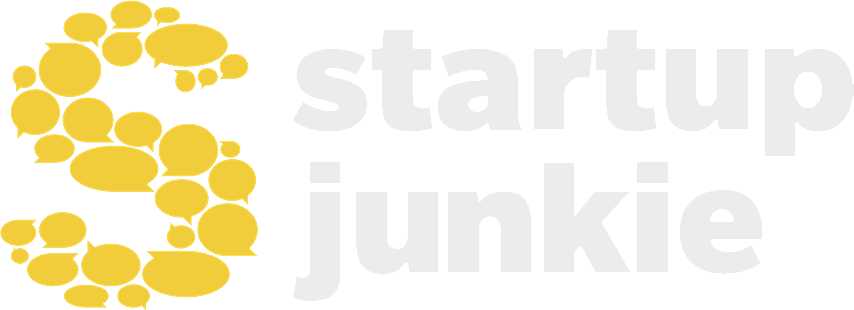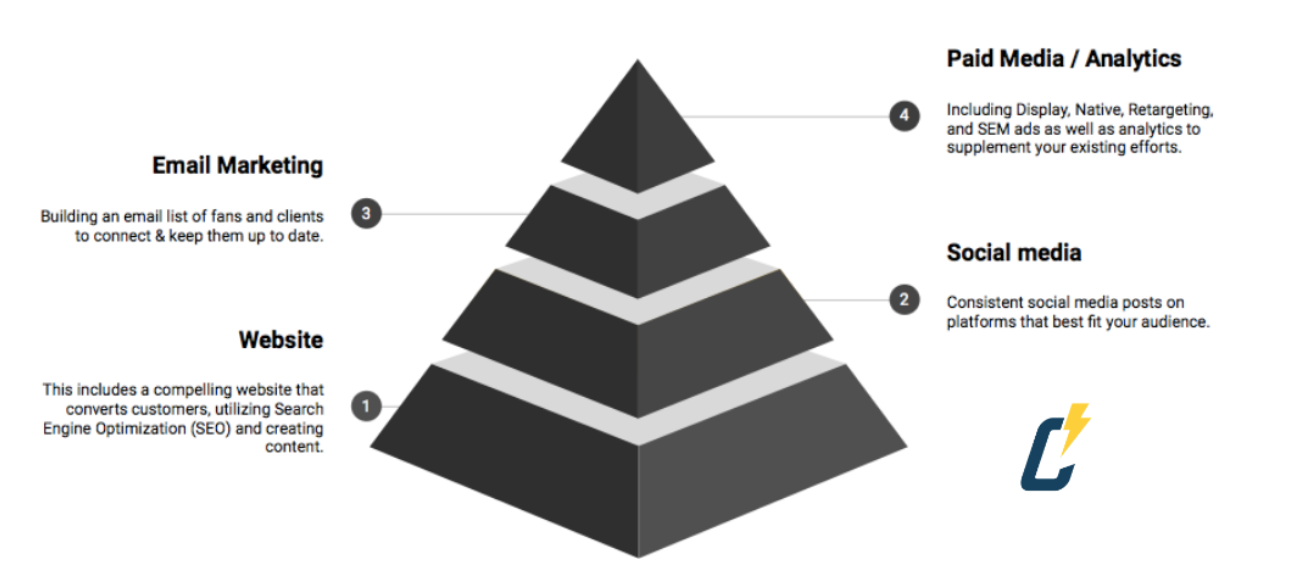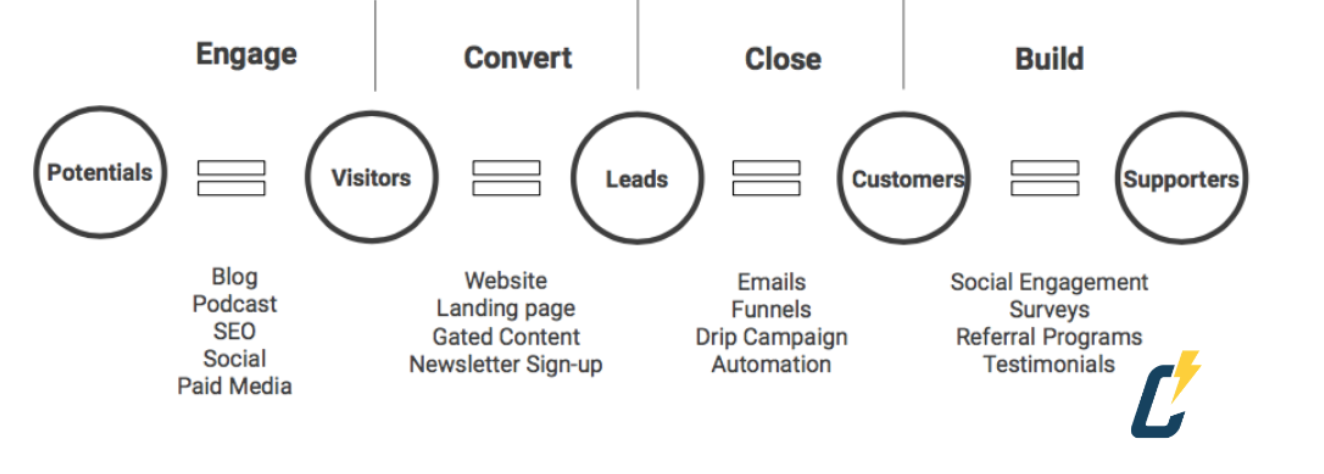Digital marketing has become a proverbial buzz word in recent years as more of the world, and thus consumer purchases, move online. The thing with digital marketing is that it can be as confusing, complicated, and overwhelming as you allow it to be. But once you’ve got a strong understanding of best practices, it can also be used as a tool, in conjunction with a sales strategy, that transforms your business.
But what is digital marketing?
I think of digital marketing as a pyramid. Your good solid base starts with a compelling website that converts customers, utilizes Search Engine Optimization (SEO), and contains regularly updated content. The next layer adds engaging social media on platforms that best fit your audience. Next comes building an email list of fans and clients and email campaigns that keep them connected to your brand. Finally, the cherry on top is utilizing Paid Media ads to supplement all of those efforts.
If you’re on the ground floor, great! Optimize that website and begin to dabble in social media. A strong digital presence wasn’t built in a day. These are building blocks to position your business before creating your digital strategy. The key is understanding the importance of these efforts.
Many entrepreneurs I work with either 1) see the value of digital marketing, but feel overwhelmed by the prospect of doing it themselves, or 2) don’t see the true value of a digital strategy. We all know marketing online is important, but why? Well, 51% of shoppers surveyed say they use Google to research a purchase they plan to make online (Think with Google, 2019), 84% of people say that they’ve been convinced to buy a product or service by watching a brand’s video (Wyzowl, 2020), & 59% of shoppers surveyed say that being able to shop on mobile is important when deciding which brand or retailer to buy from. (Think with Google, 2019). So, an active online presence, nurtured through good digital marketing, can be a difference maker for YOUR customer buying trends. A good digital strategy can turn those consumer trends into an advantage through brand awareness, lead nurturing, and conversion.
Your entire strategy should work towards a common goal, the digital marketing secret – The key to effective digital marketing is connecting with your ideal client in the right place & in the right way.
You can keep throwing darts at the wall, but if you aren’t hitting the bullseye then you won’t win the game. So let’s talk about how to be targeted, intentional, and, most of all, effective.
Ideal Client – create an ideal client profile, or oftentimes in marketing, it’s called a buyer persona. Essentially, what does your ideal client look like? If you are business to consumer (B2C), Are they older? younger? women? men? parents? students? If you are business to business (B2B), Are they small? large? What is/are the vertical(s)?
Right place – Determine your appropriate method. Where can you best interact with your clients? Where are they making their buying decisions? WHO is making their purchasing decisions?
Right way – Drive them to your desired outcome – every marketing message has a goal or desired outcome – make sure to integrate a call to action. Figure out what you want to ask them to do, or need to ask them in order to make them a client, then integrate that ask into your strategy.
So once you finalize your ideal client, your call to action, and where your clients make those purchasing decisions AND you’ve completed the digital pyramid, it’s time to build your digital marketing strategy. Each component builds on each other to take your potential client and convert them into customers or even supporters of your business.
You start by engaging your audience with blogs, podcasts, and social media to establish yourself as a subject matter expert. You then work to optimize your website with SEO and even supplement with paid media. All of these efforts work to 1) establish you as a subject matter expert 2) promote brand awareness 3) connect your target audience with your business.
Then, it’s time to convert. Take the visitors of those platforms and engage them with your business. You do this by leading them to your website, a landing page, gated content, a newsletter sign-up, or whatever your call to action should be in order to engage those visitors and turn them into leads for your business.
Now, it’s go time. You need to convert that lead into a customer. You can use sales funnels, a drip campaign or any marketing automation to turn that potential customer into a sale. Think, an email campaign that’s automated to drive customers towards your desired action or once a lead signs up for your free white paper, you send them into a sales funnel with your sales team.
Once you’ve made the sale, it’s time to create supporters. You can do this through effective referral programs, asking for reviews or testimonials, and even simple social engagement. Turn those customers into repeat customers or even just fans of your brand to continue to promote your business.
Now, all of this is easier said than done. It takes iteration, trial and error, and persistence to find the right cadence, methods, and content in order to really capitalize on your digital strategy. However, once you find it, it will transform your business by seamlessly converting your leads, generating customers, and creating fans of your business.


